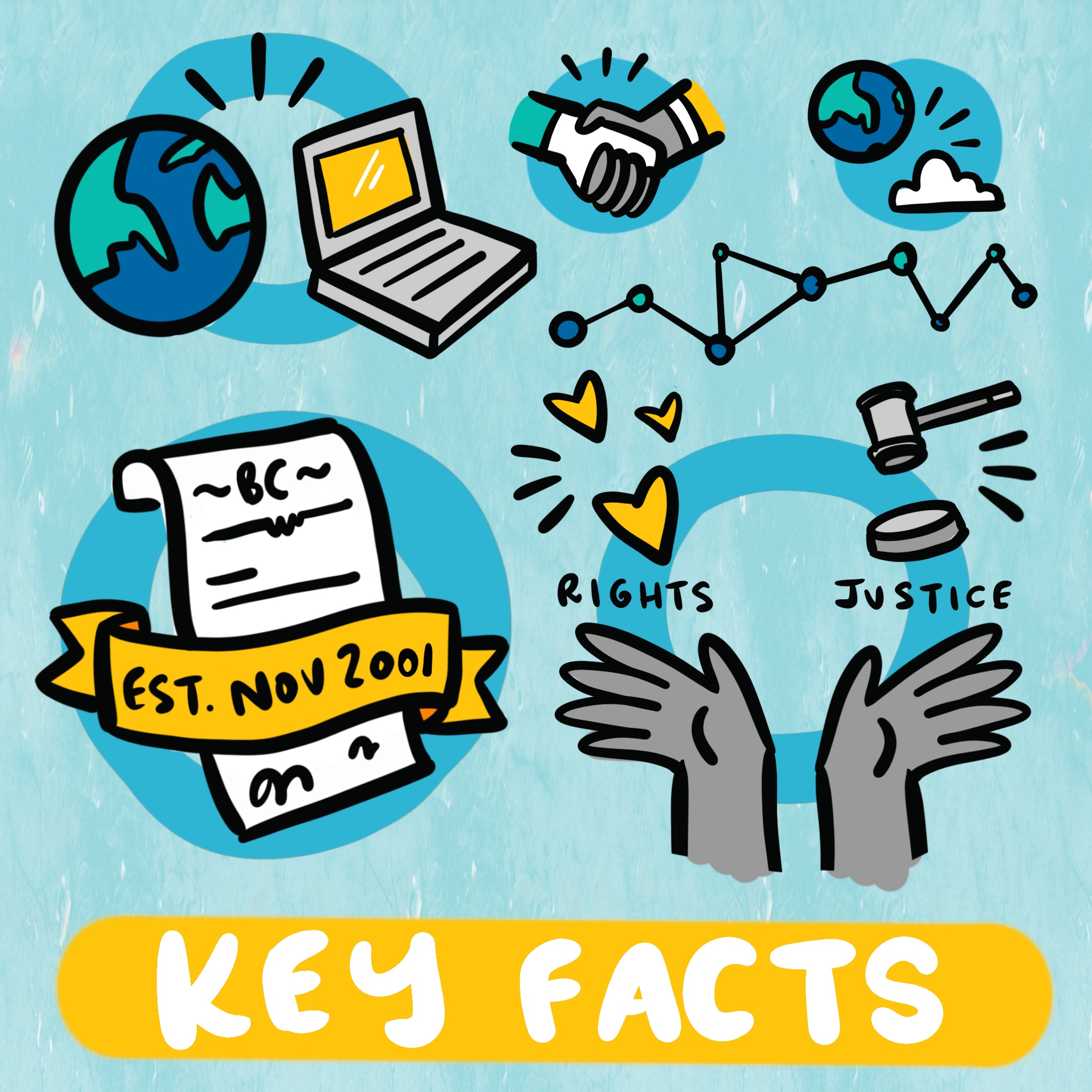How relevant is the Convention?
158
States have used the Budapest Convention
as a guideline or source for their domestic legislation *
* By 30 June 2021
To date, the Budapest Convention remains the most relevant binding international treaty on cybercrime and electronic evidence. A secret to its longevity is its technology-neutral language.
Moreover, the Convention is not only a cybercrime treaty. It enables the exercise of procedural powers and tools for international cooperation in relation to any offence entailing electronic evidence.
Thus, the Budapest Convention covers a broad range of offences and its provisions are applicable to botnets, phishing, terrorism, identity theft, malware, spam, DDOS and critical infrastructure attacks, election interference, cyberviolence, to name just a few.
When was the Budapest Convention on Cybercrime opened for signature?

The Convention reconciles
effective criminal justice and human rights safeguards
Art. 15 “Each Party shall ensure (…) the adequate protection of human rights and liberties”
The Budapest Convention reconciles the vision of a free Internet, where information can freely flow and be accessed and shared, with the need for an effective criminal justice response in cases of criminal misuse. Restrictions are narrowly defined; only specific criminal offences are investigated and prosecuted, and specified data that is needed as evidence in specific criminal proceedings is secured subject to human rights and rule of law safeguards.
How do countries accede to the Convention?
The treaty is open for accession by any country ready to implement it!
Who are the Members?
68
Parties*
15
countries have signed or been invited to accede*
80 %
of States worldwide have used the Budapest Convention as a guide or source of inspiration for their domestic legislation
The main pillars of the Convention
The Budapest Convention
The Convention provides for (i) the criminalisation of conduct – ranging from illegal access, data and systems interference to computer-related fraud and child pornography; (ii) procedural law tools to make the investigation of cybercrime and the securing of electronic evidence more effective subject to conditions and safeguards, and (iii) effective international cooperation.
1st Additional Protocol
2nd Additional Protocol
This Protocol on enhanced cooperation and disclosure of electronic evidence is designed to ensure more effective investigations and prosecutions and international cooperation on cybercrime and electronic evidence. Its adoption is expected in November 2021 in view of opening for signature in March 2022.
1
A (draft) law indicates that a State has already implemented or is likely to implement the provisions of the Budapest Convention in domestic law and to engage in cooperation.
2
The Government (typically the minister of foreign affairs) sends a letter to the Secretary General of the Council of Europe stating the interest of the State in accession to the Convention.
3
Once there is agreement by the current Parties to the Convention, the State is invited to accede.
4
The authorities of that State complete their internal procedures before depositing the instrument of accession at the Council of Europe.
What impact has the Convention had?
Global outreach of the Budapest Convention (78 countries signed, ratified, invited to join, cooperation with more than 150 countries) keeps ensuring and multiplies the global impact it has all over the world and in cyberspace:
Stronger and more harmonized cybercrime legislation worldwide
Consistent approach to criminalizing conduct
More efficient international cooperation between Parties
Trusted partnerships and multistakeholder cooperation
More investigation, prosecutions and adjudication of cybercrime
Catalyst for technical assistance and capacity building
Global outreach
=
global impact
Essential element of norms of behaviour for cyberspace
Contribution to human rights and the rule of law in cyberspace



